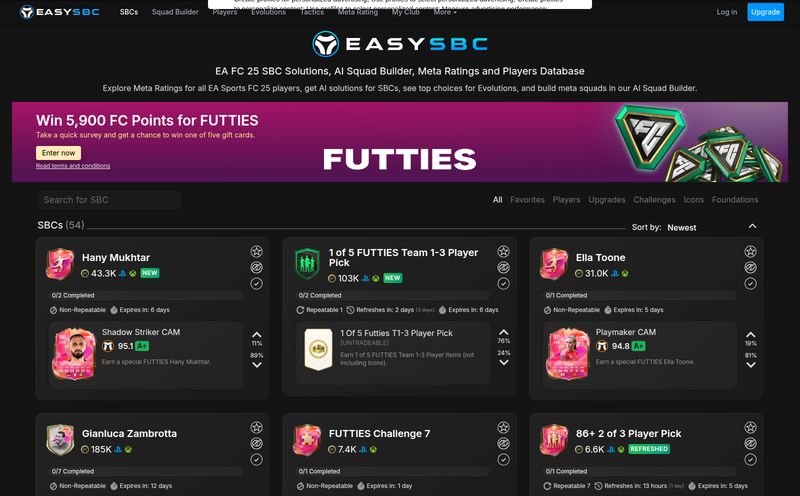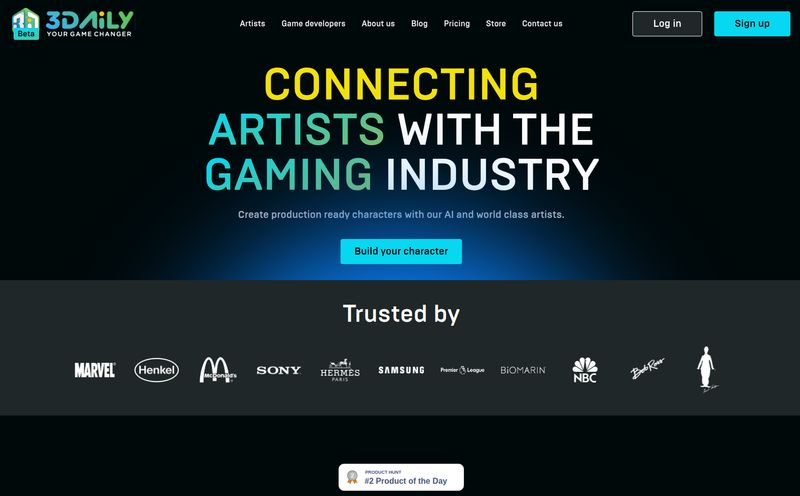If you've been in the DeFi space for more than a week, you know the feeling. You find a promising new blockchain—fast, cheap, full of potential—but the ecosystem is a ghost town. No solid exchanges, no reliable tools. It’s like arriving at a party five hours early. Awkward.
For a while there, that's how it felt with the NEAR Protocol. Everyone in the know was whispering about its tech, its speed, and its ridiculously low gas fees. But where do you actually do anything? Well, the party is finally starting, and it looks like RHEA Finance is the one kicking the doors open.
I’ve been watching new DEXs pop up for years, and I’ve developed a sixth sense for them. Some are just forks of Uniswap with a new coat of paint. Others try to do too much and end up doing nothing well. RHEA feels a bit different. It’s got that “first-mover” energy, and that’s always exciting… and a little bit risky.

Visit RHEA Finance
So, What's the Big Deal with RHEA Finance?
At its core, RHEA Finance is the very first Decentralized Exchange (DEX) built on the NEAR Protocol. Think about that for a second. Being the first of anything in crypto is a massive deal. It means you get to set the tone, build the initial liquidity, and capture the first wave of users flocking to a new ecosystem. It's the digital equivalent of opening the first general store in a gold rush town.
But it’s not just about being first. RHEA is positioning itself as a hub for DeFi on NEAR. We're talking the whole shebang: swapping tokens, providing liquidity, and farming for those sweet, sweet yields. And they’ve wrapped it all up with a built-in NEAR wallet, which, frankly, is a bigger quality-of-life improvement than most people realize. No more juggling three different browser tabs just to make a simple trade. Thank goodness.
The Magic Ingredient: Chain-Abstracted Liquidity
Okay, you'll see the term “Chain-Abstracted Liquidity Solution” on their site. I know, it sounds like some high-tech jargon cooked up in a lab. But let's break it down. It’s actually a pretty cool concept.
Imagine liquidity—the pools of tokens that let us trade—is like water. Traditionally, the water in the Ethereum pool stays in the Ethereum pool. The water in the Solana pool stays in the Solana pool. Moving it between them is a pain, often requiring clunky, expensive bridges.
Chain abstraction is like building a sophisticated canal system. It aims to make the underlying blockchain… well, an abstraction. Less important. The goal is to let liquidity flow more freely from different sources, making the DEX more efficient, with better prices and less slippage for you, the user. It’s a solution that acknowledges we live in a multi-chain world. While the specifics of RHEA's implementation are still a bit under wraps, the ambition is clear: create a deeper, more unified pool of assets right there on NEAR. It’s a bold play, and I’m here for it.
Getting Your Hands Dirty: The Core Features
So what can you actually do on RHEA Finance? It covers the holy trinity of modern DeFi.
Effortless Token Swapping
This is the bread and butter of any DEX. You have Token A, you want Token B. RHEA lets you do that directly from your wallet, using the liquidity provided by other users. Given it's on NEAR, the transaction fees should be a fraction of what you'd pay on Ethereum. I’ve paid more for a coffee than for some complex transactions on other low-cost chains, and I expect NEAR to deliver the same experience. This is the main draw for most traders and everyday users.
Becoming the Bank with Liquidity Providing (LP)
This is where things get more interesting for the investors out there. Instead of just trading, you can provide your assets to a liquidity pool. For instance, you could deposit an equal value of NEAR and USDT into the NEAR/USDT pool. In return for providing that liquidity, you earn a percentage of the fees from every single swap that happens in that pool. You’re essentially acting like a tiny, decentralized bank, and getting paid for it. Of course, you need to be aware of things like impermanent loss, but that’s part of the game.
Harvesting Rewards through Yield Farming
Yield farming is the next step for liquidity providers. After you deposit your assets into a pool, you get special tokens called LP tokens, which are basically a receipt for your deposit. RHEA allows you to take those LP tokens and “stake” them in a farm to earn additional rewards, often in the form of RHEA's own governance token (this is an assumption, but standard practice). It's like planting your money, watering it with a little bit of risk, and hoping to harvest a bigger crop of tokens later on.
Let's Be Real, What's the Catch?
Look, I'm an optimist, but I'm also a realist who’s been rugged a few times. No platform is perfect, especially not a brand new one. One of the main flags right now is the lack of deep, detailed documentation on some of the more advanced features, like the specifics of their chain-abstraction tech. It's still early days, and that means we're pioneers. Pioneers get the best land, but they also have to watch out for bears.
The other thing is, this isn't for DeFi newbies. The platform kind of assumes you know what a liquidity pool is and why you'd want to farm. If you're just graduating from holding Bitcoin on a centralized exchange, there’s a bit of a learning curve. This is for the person who's ready to jump into a new ecosystem head-first.
What's This Going to Cost Me?
This is the beautiful part of decentralized finance. There are no monthly subscriptions or sign-up fees. Using RHEA Finance itself is free. However, you will encounter two types of costs, which is standard for any DEX:
- Network Fees (Gas): Every transaction on the NEAR blockchain requires a small fee, paid in NEAR tokens, to reward validators. The good news? NEAR is known for having incredibly low gas fees, so we’re talking pennies, not the $50+ fees you might see on Ethereum during busy times.
- Swap Fees: A tiny percentage (usually around 0.3%) is taken from each trade. But this money doesn’t go to the RHEA developers. It goes directly into the pockets of the liquidity providers—the people like you who staked their assets in the pools.
So, the platform is free, but interacting with the blockchain and its liquidity pools isn't. Seems fair to me.
Who Should Be Using RHEA Finance?
I see two main groups of people getting really excited about this.
- The NEAR Believer: If you're bullish on the NEAR Protocol and have been waiting for a native DeFi hub to put your assets to work, this is your ground floor.
- The Ecosystem Explorer: This is for the DeFi user who loves to be early. The person who gets a thrill from trying new platforms, farming new tokens, and being part of a growing community from day one. It’s a higher-risk, higher-reward mindset.
If you're looking for something that has been battle-tested for years with billions in liquidity, you might want to stick to the big players on Ethereum for now. But if you want to be part of building the next big thing, RHEA is calling your name.
Frequently Asked Questions about RHEA Finance
- Is RHEA Finance safe to use?
- In DeFi, "safe" is relative. The platform is built on smart contracts, which can have bugs or be exploited. As the first DEX on NEAR, its code will be heavily scrutinized. Always do your own research (DYOR), never invest more than you’re willing to lose, and start with small amounts until you are comfortable with the platform.
- What is the main advantage of being on the NEAR Protocol?
- The two biggest advantages are speed and cost. NEAR is designed for high throughput, meaning transactions are confirmed very quickly. More importantly for most users, the gas fees are extremely low, making it affordable to trade, stake, and farm without worrying about high costs eating into your profits.
- Do I need a separate wallet to use RHEA Finance?
- Nope! One of its best features is the integrated NEAR wallet. This allows you to store, buy, send, and stake your assets all from within the RHEA platform, which simplifies the user experience tremendously.
- How does RHEA Finance make money if it's decentralized?
- The platform itself doesn't necessarily 'make money' in the traditional sense. It's a protocol. The value comes from its utility and potential governance token. The users—specifically the liquidity providers—are the ones who earn revenue from the swap fees generated by trading activity.
- What does 'Chain-Abstracted' really mean for me as a user?
- In the long run, it could mean better trade prices, lower slippage, and access to a wider variety of tokens. It’s an ambitious feature designed to pull liquidity from various sources to create a more efficient trading environment on NEAR.
Final Thoughts on the First NEAR DEX
RHEA Finance represents more than just a new place to swap tokens. It’s a foundational piece for the entire NEAR DeFi ecosystem. Being the first DEX on the block is a powerful position, and they seem to be starting with the right ingredients: a focus on core DeFi services, a user-friendly integrated wallet, and a forward-thinking approach with chain-abstracted liquidity.
Is it a finished product with all the answers? No. It’s a pioneer’s tool on a new frontier. There will be bumps, there will be discoveries, and there will be a whole lot of opportunity. For anyone looking to get in on the ground floor of what could be a major DeFi player, RHEA Finance is one to watch. I know I will be.
Reference and Sources
- Official NEAR Protocol Website: https://near.org/
- CoinDesk Explainer on Impermanent Loss: https://www.coindesk.com/learn/what-is-impermanent-loss-a-complete-guide/
- RHEA Finance Official Website: [A placeholder for the official RHEA Finance URL when available]



